The Gen-X Election
We'll be doing post-mortems for weeks if not months. While Gen-X won it for Trump, a big chunk of Trump voters abandoned GOP congressional candidates. And native Americans did what?
One could almost hear the collective exhale of anxious Americans as the presidential election was called in the wee hours of Wednesday, November 6th. Like it or not, it was a decisive win—just what we needed, no matter who the victor was. The losing side can get on with their five stages of grief. Stage Two was dominant much of this week, but there is still a lot of Stage One, including those accusing Latino men of misogyny and racism.
People melting down on social media were a sight to behold, including one woman who inquired how to hire a “hitman” or woman, as she quickly added, to take out Donald Trump. I’m sure the Secret Service will be paying her a visit.
We didn’t need more election deniers like in 2000 (hanging chads and Supreme Court decisions in Florida), 2004, or Hillary Clinton in 2016. Nor did we need what Donald Trump and many of his supporters irresponsibly fomented after 2020, even if the many Pandemic-fueled and dubious state-level election changes badly undermined confidence in that election.
Side note: The J6 narrative is changing as facts are revealed, especially with new Department of Justice and FBI leadership on the way. Pay attention and keep an open mind.
Thank goodness that nearly half the states adopted changes over the past four years to clean up the messes many states made in 2020. Many more are still needed, and legal challenges against some more abusive states, such as Pennsylvania, for failing to keep their voter rolls clean will be interesting.
But much of that is water under the bridge. Just a guess on my part, as a veteran of Pennsylvania politics and a residence there of 20 years - the Philly-area Democrats sat on their hands this election given the Harris campaign’s arrogant treatment of them. Don’t believe me? Note this from former US Rep. Bob Brady (D-PA), the long-time local chair of the Philadelphia County Democrats:
And if they were doing that to Philly’s legendary machine, where Pennsylvania elections are won and lost, imagine other places, like New Jersey, where Trump and other Republicans dramatically improved their margins. New Jersey looked more like Virginia in 2024 than New York, as it typically does. And Jersey’s Democratic machines are about as potent as Philly’s.
It didn’t translate to down-ballot races, but more about that later. That may prove the real story and lesson of the 2024 campaign, a yellow caution flag for the GOP. But in the meantime, let’s talk about the other lessons, especially the political “institutions” that need a massive overhaul.
Message Trumps Money
The Harris campaign and Democrats in general never lacked resources. They swam in campaign cash. The Harris campaign reportedly raised over $1 billion, not counting independent “super PAC” and other spending. I remember when spending for all federal political campaigns hit the $1 billion mark about 30 years ago. This is obscene and needs to be looked into.
Reportedly, Harris’s campaign still finished some $20 million in debt. Among the many circular firing squads busy at work among Democrats, many are blaming “high-priced” Obama-era consultants. We’ll know more once the final Federal Election Committee financial disclosures for this campaign season are filed in January.
Meanwhile, the Trump campaign raised and spent about $388 million during that same time period. Trump was outspent nearly 3:1, just like in 2016, with the same result. His messages, even if he wasn’t perfect or consistent in delivering them, trumped hers (no pun intended).
The National Popular Vote Initiative is Dead
Has anyone done a wellness check on the National Popular Vote Project? In their words, you know, those people who “would guarantee the Presidency to the candidate who receives the most popular votes in all 50 states and the District of Columbia.” It has been enacted into law by 17 states and DC with 209 electoral votes (Status in the states). It needs an additional 61 electoral votes to go into effect.
The project is a clever way to circumvent the Constitutionally-enshrined Electoral College. Its proponents believed that Democrats would always win the popular vote despite GOP advantages in the Electoral College. But did the 17 primarily blue states, including Colorado and Maine, count on this year’s popular vote win for Donald Trump?
Hey, Colorado citizens! Your governor, Jared Polis, a Democrat, signed a law this year that embraces the National Popular Vote project. In effect, he said your state’s electoral college votes this election should go to Donald Trump, even though most of you voted for Kamala Harris. How do you feel about that? Disenfranchised, maybe?
Now, that’s not going to happen because not enough states have passed the “national popular vote” initiative for it to take effect. They’re 61 electoral votes short of making this law. It would be funny if Donald Trump thanked Polis for believing Colorado’s electoral votes should go to him, especially after the state’s imbecilic Secretary of State, Polis ally Jena Griswold, tried to keep Donald Trump off their ballot, which the Supreme Court quickly struck down and strongly.
About those “threats to democracy.”
Let’s discuss the “exit polls,” which I don’t like. They often prove inaccurate. I always harken to the 2004 exit polls, which led then-Sen. John Kerry’s campaign manager, Bob Shrum—0-4 in presidential campaigns— to congratulate the Senator as “Mr. President.” We know how that turned out.
George W. Bush was the last Republican presidential candidate to win the popular vote in 2004 until Donald Trump in 2024. I did not see that coming.
Democrats and their media allies (redundancy alert) were giddy about the first exit polls released just after polls closed. Many, not all, showed “threats to democracy” eclipsing the economy as voters top concern. Democrats spent billions to make the election about Orange Hitler Donald Trump being a fascist dictator who would send people into internment camps and end bureaucracy Democracy™ as we know it.
Voters were concerned about threats to democracy. I was among them. And by a slim margin, we said Kamala Harris and the Democrats were the real threat. As reported by friend and GOP pollster David Winston, “73% of the electorate said democracy was threatened rather than secure (25%), but among the voters who said democracy was threatened, Trump won by 3 (51-48).
“Those who said it was very threatened voted for Trump by 4 (51-47). Oops.
Enough Americans figured out that Democrats, with their censorship schemes, COVID mandates, and lawfare, along with hiring 80,000 new IRS agents, were the more significant threat. That so many Democrats are surprised by this shows how detached from reality they are. They need to get out of their blue bubbles. May I recommend they drive out to the Shenandoah Valley and stop for brunch at Tammy’s diner in Round Hill, Virginia, even if it is past peek fall foliage along these parts of the Blue Ridge.
The media and polling industries are dead. Long live the new media and pollsters.
The legacy media aren’t the only ones living in lala land. Many of the “legacy” pollsters and prognosticators, especially Professor Alan Lichman and legendary statistician Nate Silver, have seen their 15 minutes of fame expire. Most traditional public polling outfits won’t fare well in post-election analyses, even though polling is not supposed to be predictive.
Some pollsters, however, such as Mark Mitchell of Rasmussen Reports, are taking victory laps, given their apparent ability to better reach Trump voters through unconventional online and other methods.
"What a pack of lying scumbags the entire industry is," he said. "I got a lot of flack for saying that this was gonna be 1980s-style landslide. And I think it was a landslide, but as I said, Trump’s not gonna get as much as Reagan because there was a third-party spoiler, but the parallels are that back then, all the pollsters were lying. They were saying that the race was too close to call. This race was never too close to call according to my numbers, and they just ignored them."
"So, yeah. I feel pretty vindicated," he said. "People try and cherrypick our results to show that we're inaccurate, but we did pretty good in the last few cycles, and I think we did even better now."
Lichman broke down on national media when his predictions of a Democratic victory evaporated. Nate Silver has announced that he’s taking down his model for a retool. Silver, especially, is a master of equivocation. I subscribeto his Substack, and my head spins with his constant “on the other hand” qualifiers behind anything that resembled a prediction or analytical result so he can take credit for whatever happens. Their departure from the scene will be a welcome, if only temporary, respite.
Another class of political prognosticators I’d like to dispatch with permanently - the gamblers or betting markets. From Slate:
It’s hardly surprising that the era of meme stocks, cryptocurrency speculation, and legalized sports betting has fueled enthusiasm over the prospect of making a buck on the future of our democracy. What is more remarkable is how legitimized the practice has become in the rarefied world of election-casting—and how powerful an indicator it has become in modern-day politics.
Take, for example, the 4-year-old Polymarket. The app and its users have notched impressive wins lately, having predicted Biden’s withdrawal from the 2024 race long before media outlets considered the possibility, and nailing its guess on the Walz-vs.-Shapiro veepstakes the night before the official announcement. (All without being able to legally serve U.S. customers, at the time of reporting.)
Make them go away. Nothing good can come from this, and I see little value in tracking how people are betting on the election. Given all that goes into placing bets, how is that a helpful barometer: people looking to make a quick buck based on odds? Really?
The conservative Media Research Center (MRC) does a decent job of tracking positive and negative coverage of politicians. Still, it doesn’t take a rocket scientist to figure out which candidate, Trump or Harris, received which type of coverage on the three major broadcast networks: ABC, CBS, and NBC.
One week before Election Day, a new analysis from the Media Research Center finds that broadcast evening news coverage of the 2024 presidential race has been the most lopsided in history. Since July, ABC, CBS and NBC have treated Democratic Vice President Kamala Harris to 78 percent positive coverage, while these same networks have pummeled former Republican President Donald Trump with 85 percent negative coverage.
However, as the chart above, produced by Elon Musk’s X (former Twitter) site, shows, those broadcast networks are attracting fewer eyeballs for their evening news broadcasts. People are turning to new and alternative media formats in droves for insights to inform their votes. No one should be surprised, and those same legacy broadcast outlets appear not to have learned a single lesson nor seem interested in self-reflection or a reset. The same applies to legacy newspapers, such as the Washington Post and the New York Times, even as they claim to be gaining subscriptions thanks to heavy discounts or making cancellations challenging. A new Federal Trade Commission “click to cancel” rule for ongoing subscriptions to be easier to quit will be interesting to watch.
My friend and Virginia GOP campaign consultant Andrew Loposser correctly noted Trump’s triumph over Harris in the digital media, which was once dominated by Democrats, especially Barack Obama’s campaigns in 2008 and 2012.
The legacy media spread falsehoods. Liberal pollsters tried to demoralize supporters by claiming Iowa would flip to Kamala Harris just days before the election. Trump's opponent outspent the campaign online four to one, saturating the internet with carefully crafted narratives designed to mislead voters.
Yet, despite these challenges, Trump's campaign responded with a digital strategy that was both innovative and relentless—outmaneuvering its opposition, reaching voters directly, and bypassing traditional gatekeepers altogether.
This includes harnessing the power of long-form interviews with leading “on-demand” podcasters such as Joe Rogan and a relentless and relatable TikTok outreach effort. Such efforts helped insulate Trump from relentless attacks by humanizing him.
The Demographics: Gen X for the win (for Trump)
As someone who studied demographics in graduate school, I pay more than average attention to things like age, gender, race, etc., in elections. Generational differences matter greatly since Boomers, Gen Xers, millennials, and now Gen Zers (born after about 1997) share many of the same formative experiences. We now live in the Gen A cohort (those born since 2012). Measuring results by generations involves people with similar stations in life, from children to careers.
Forty-three percent of voters fell into the 40-64 age group, which closely mirrors Generation X. Note the results, especially among the older Gen Xers (ages 50-64). Wow, a 13 percent margin for Trump. Boomers like me broke even, as the youngest cohorts broke for Harris (but not as much as predicted). Voters with children under 18 broke heavily for Trump.
Now, why would older Gen Xers (and especially those without a college degree) vote this way? Could it have something to do with the pandemic, where they were sold a steaming pile of bullsh*t information about the COVID pandemic, including forced jabs with vaccines that didn’t work, schools closed for their children at the insistence of teacher unions, masking and arresting the development of young children, watching girls being forced to compete against biological males, and stagnant job growth? At the same time, they saw their savings and paychecks eroded by 25 percent (or higher) prices.
Just a guess. Congratulations, Gen Xers, who solidly determined the outcome of this election.
One last thing. Who had Native Americans going 64% for Donald Trump on their bingo card? Okay, they’re one percent of the vote, but still. As an Oklahoma native who has worked in Arizona politics - the states with the highest Native American populations - this is my biggest election surprise. Kudos to US Sen. and Cherokee tribal member Markwayne Mullin (R-OK).
Trump is Obama is Reagan
While there were some big Republican wins in many places, such as Michigan’s lower house becoming majority Republican and the GOP’s Dave Sunday winning election as Pennsylvania’s Attorney General, Trump’s margin of victory in swing states did not translate into GOP gains for the Senate and House. GOP candidates largely trailed Trump by hundreds, if not more than 100,000 votes. While ticket-splitting isn’t what it used to be, that is significant and will keep the new Senate GOP majority to 53 seats.
The CNN Exit Poll may give us a clue. Nine percent of Trump voters disapproved of him. Did these voters hold their noses and vote for Trump but voted down ballot for Democrats to keep a check on the Trump Administration? Again, just a guess. CNN’s Exit Poll, again:
Even in Pennsylvania, Trump won the Keystone State by 150,000 votes over Kamala Harris. Meanwhile, GOP Senate nominee and likely Senator-elect Dave McCormick, at this writing, is hanging on to a 39,000-vote lead over 18-year incumbent Bob Casey Jr. as Democrats likely scour for missing ballots in the backs of car trunks in west Philly. President Trump out-polled Senator-elect Bernie Merino in Ohio by more than 300,000 votes. Trump won 400,000 more votes in Texas than Senator and fellow Republican Ted Cruz, as both cruised to victories.
The lesson is that, like Barack Obama and Ronald Reagan before him, Trump was very good at turning out votes for himself but the coattails were short. The lesson for candidates is that you need to develop your persona and not try to rely on coattails. That also proved true during Ronald Reagan’s 1984 electoral and popular vote landslide as Congress remained under Democratic control.
Next Steps: The transition and the races for the 2026 midterm and 2028 begin now. Sorry.
Looking ahead to 2028, Democrats at least won’t make one mistake they made in 2024—fomenting an insider coup that sent their presidential nomination to someone who never had to compete for a single primary vote or convention delegate. Vetting matters. Their field will be significant in numbers, even as they seem to lack genuine presidential chops. I expect presidential wannabes to focus on the midterms to help earn their chops and build chits in early primary and caucus states.
Trump, on the other hand, can’t run for reelection, but as the party’s 800-pound gorilla, he’ll traipse through the 2028 GOP nomination china shop any way he damn well pleases. The 2028 field will take longer to mature, and Vice President-elect JD Vance will have an inside track, depending on how well the Trump Administration performs and the congressional midterms of 2026, which will be a challenge for both the House and Senate GOP.
If history is any guide, Democrats are likely to win control of Congress in 2026. Trump will have two years to implement much of his agenda.
The first skirmishes will be over the nomination and confirmation of Cabinet and other officials and reaction to much of the Trump agenda—especially the effort to “Make America Healthy Again.” Apparently, first-term stars Nikki Haley (UN Ambassador) and Mike Pompeo (Secretary of State and CIA Director) won’t be among them. I’m sure there are stories there to learn.
Few agencies touch as many Americans as the Food and Drug Administration, from nutrition and food safety to drugs. Robert F. Kennedy Jr.’s mission to remake that and other agencies will be controversial, with all sorts of political crosscurrents. More about that in a future post, but it sure seems Trump is going to “go big,” early and fast. Buckle up.
If you were looking for a “return to normalcy,” well, forget that.
Meanwhile, enjoy not getting spammed and texted as much by money-grubbing political grifters, and salute your Gen-X friends for the election results. I’ll be curious to see how they vote in two years.

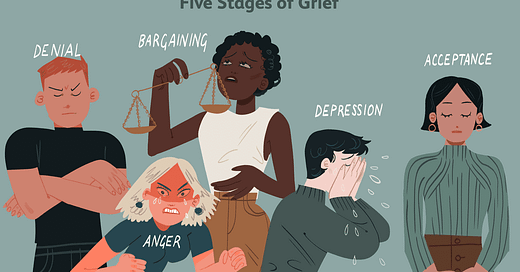



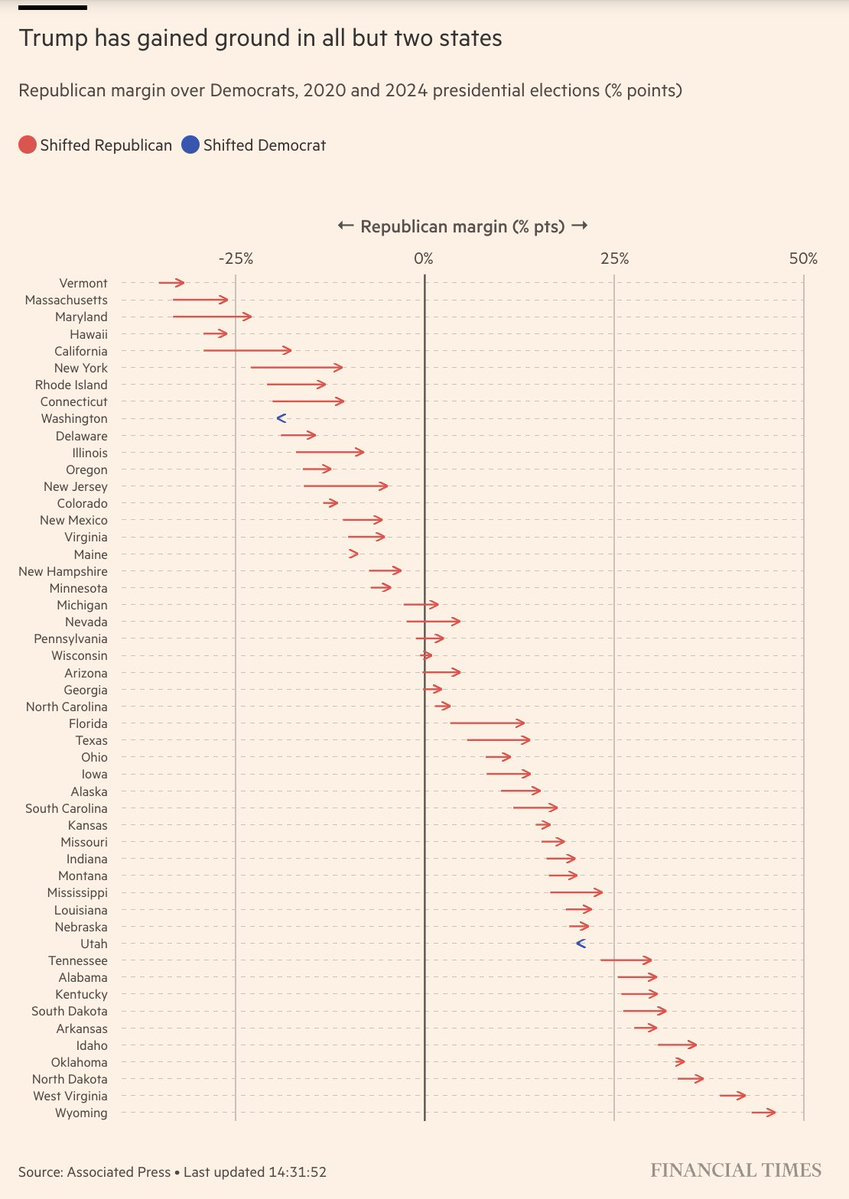
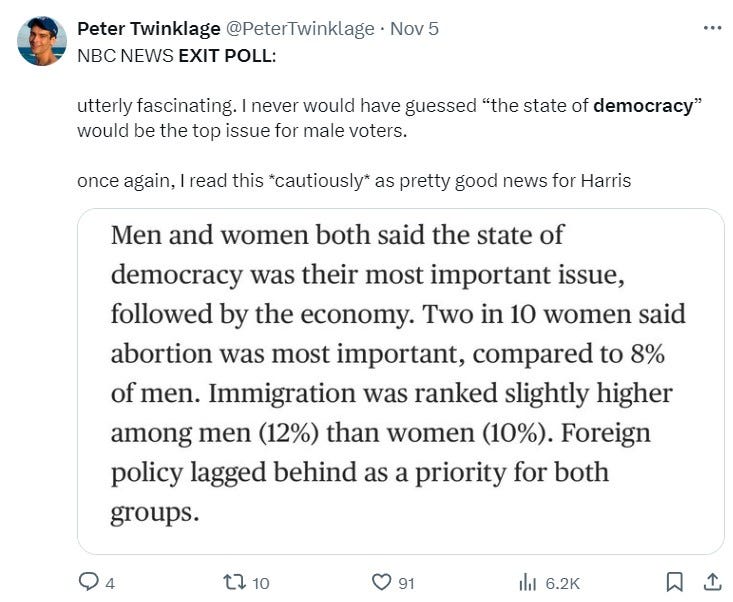
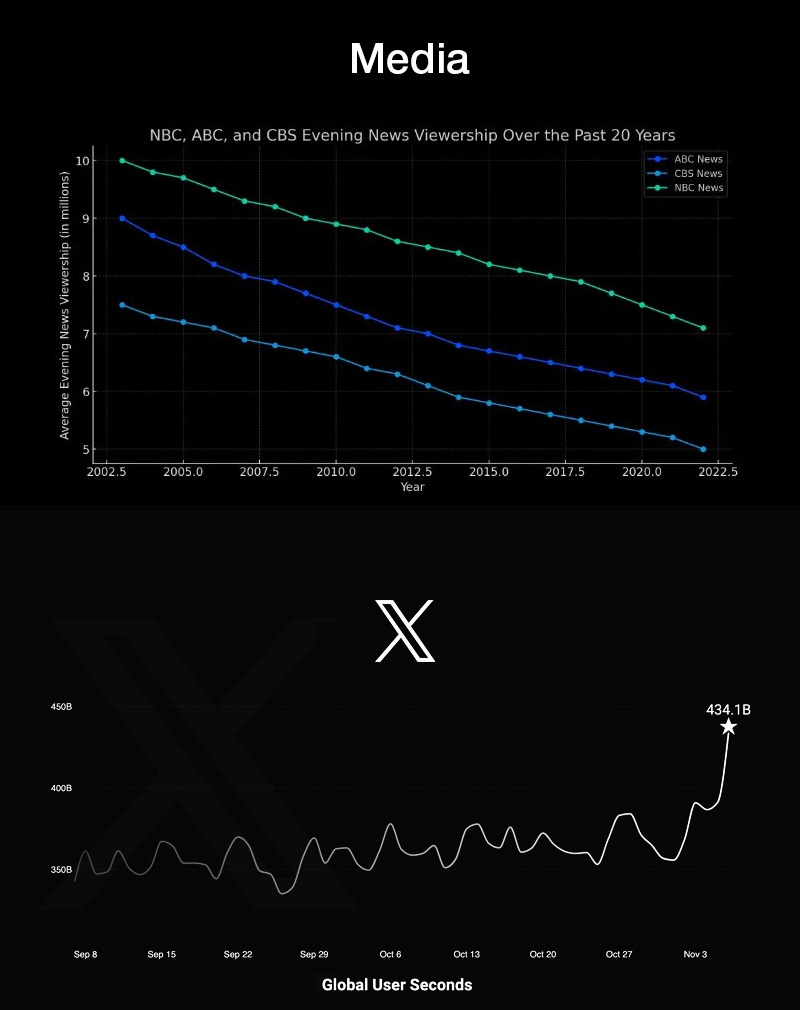


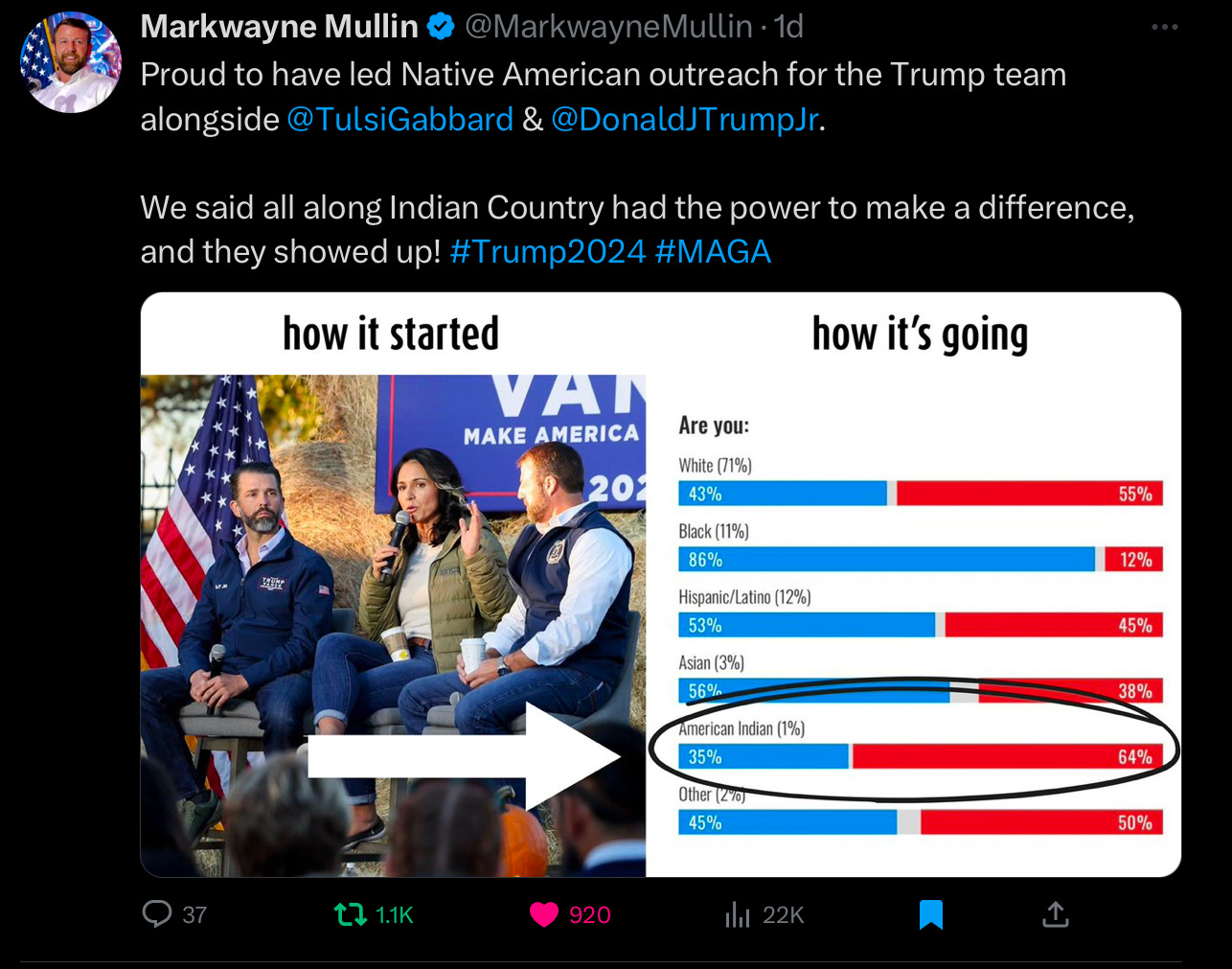


Good stuff.